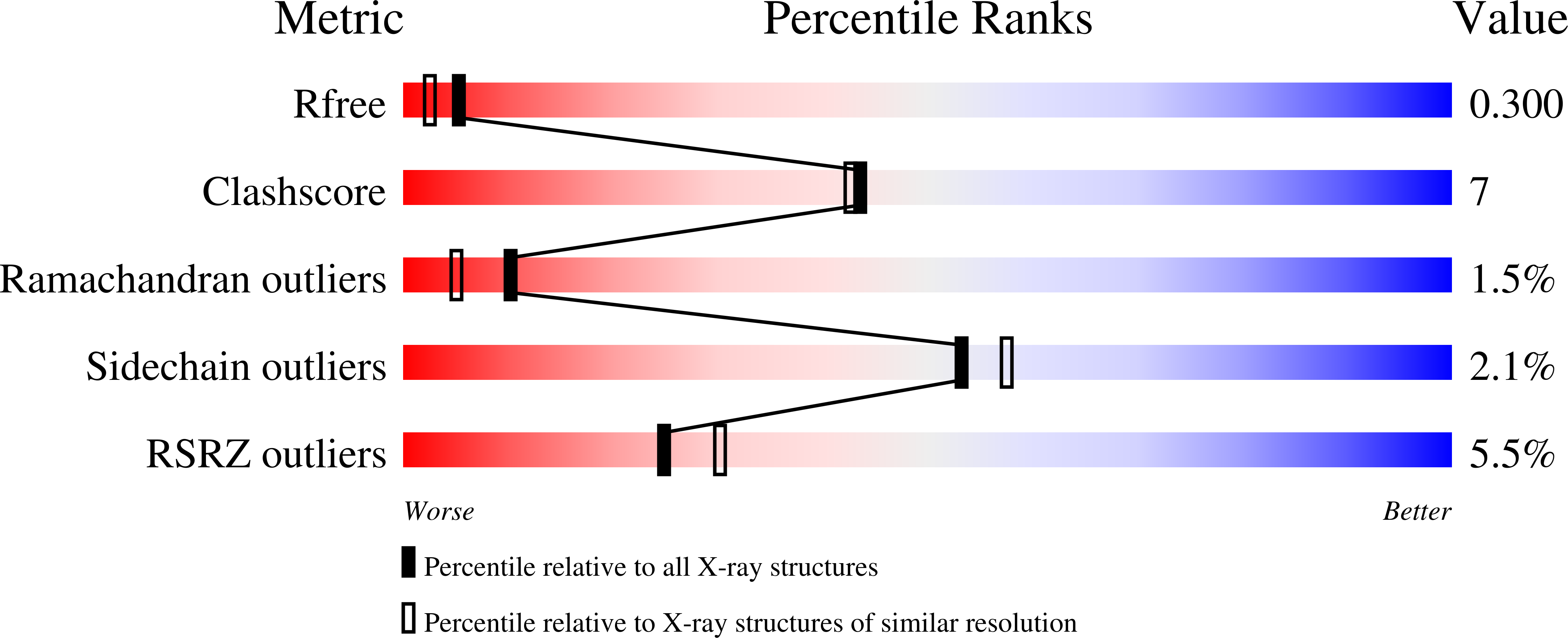HIV-1 Integrase Inhibitor-Inspired Antibacterials Targeting Isoprenoid Biosynthesis.
Zhang, Y., Lin, F.-Y., Li, K., Zhu, W., Liu, Y.L., Cao, R., Pang, R., Lee, E., Axelson, J., Hensler, M., Wang, K., Molohon, K.J., Wang, Y., Mitchell, D.A., Nizet, V., Oldfield, E.(2012) ACS Med Chem Lett 3: 402-406
- PubMed: 22662288
- DOI: https://doi.org/10.1021/ml300038t
- Primary Citation of Related Structures:
3TH8, 4F6V, 4F6X - PubMed Abstract:
We report the discovery of antibacterial leads, keto- and diketo-acids, targeting two prenyl transferases: undecaprenyl diphosphate synthase (UPPS) and dehydrosqualene synthase (CrtM). The leads were suggested by the observation that keto- and diketo-acids bind to the active site Mg(2+)/Asp domain in HIV-1 integrase, and similar domains are present in prenyl transferases. We report the x-ray crystallographic structures of one diketo-acid and one keto-acid bound to CrtM, which supports the Mg(2+) binding hypothesis, together with the x-ray structure of one diketo-acid bound to UPPS. In all cases, the inhibitors bind to a farnesyl diphosphate substrate-binding site. Compound 45 had cell growth inhibition MIC(90) values of ~250-500 ng/mL against S. aureus, 500 ng/mL against Bacillus anthracis, 4 μg/mL against Listeria monocytogenes and Enterococcus faecium, and 1 μg/mL against Streptococcus pyogenes M1, but very little activity against E. coli (DH5α, K12) or human cell lines.
Organizational Affiliation:
PrenylX Research Institute, Zhangjiagang, 215600, P.R. China.

















